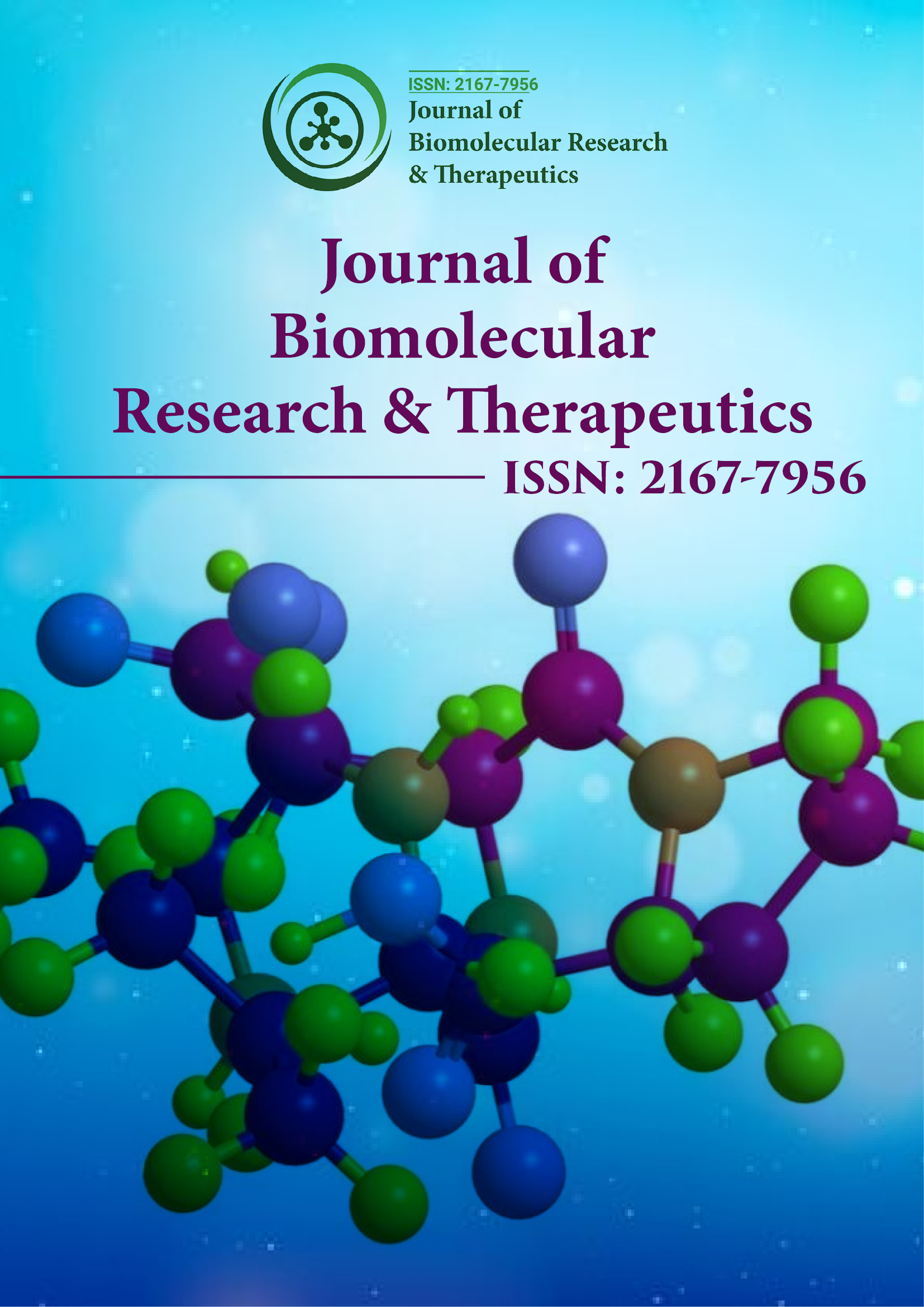PMC/PubMed Indexed Articles
Indexed In
- Open J Gate
- Genamics JournalSeek
- ResearchBible
- Electronic Journals Library
- RefSeek
- Hamdard University
- EBSCO A-Z
- OCLC- WorldCat
- SWB online catalog
- Virtual Library of Biology (vifabio)
- Publons
- Euro Pub
- Google Scholar
Useful Links
Share This Page
Journal Flyer

Open Access Journals
- Agri and Aquaculture
- Biochemistry
- Bioinformatics & Systems Biology
- Business & Management
- Chemistry
- Clinical Sciences
- Engineering
- Food & Nutrition
- General Science
- Genetics & Molecular Biology
- Immunology & Microbiology
- Medical Sciences
- Neuroscience & Psychology
- Nursing & Health Care
- Pharmaceutical Sciences
Perspective - (2021) Volume 10, Issue 9
Nuclear Magnetic Resonance Spectroscopy
Amina Berradia*Received: 09-Sep-2021 Published: 30-Sep-2021, DOI: 10.35248/2167-7956.21.10.175
Perspective
Nuclear Magnetic Resonance (NMR), specific retention of exceptionally high-recurrence radio waves by certain nuclear cores that are exposed to a properly solid fixed attractive field. Cores in which no less than one proton or one neutron is unpaired carry on like little magnets, and a solid attractive field applies a power that makes them measure in to some degree the same way that the tomahawks of turning finishes follow out cone-formed surfaces while they measure in the Earth's gravitational field. At the point when the regular recurrence of the handling atomic magnets compares to the recurrence of a powerless outside radio wave striking the material, energy is consumed from the radio wave.
This particular retention, called reverberation, might be delivered either by tuning the normal recurrence of the atomic magnets to that of a frail radio rush of fixed recurrence or by tuning the recurrence of the powerless radio wave to that of the atomic magnets (dictated by the solid consistent outer attractive field). See additionally attractive reverberation. Atomic attractive reverberation is utilized to gauge atomic attractive minutes, the trademark attractive conduct of explicit cores. Since these qualities are essentially altered by the quick compound climate, nonetheless, NMR estimations give data about the sub-atomic construction of different solids and fluids.
Uses of NMR spectroscopy
Atomic Magnetic Resonance (NMR) spectroscopy is an insightful science method utilized in quality control and exploration for deciding the substance and virtue of an example just as its subatomic design. For instance, NMR can quantitatively break down blends containing known mixtures. For obscure mixtures, NMR can either be utilized to coordinate against unearthly libraries or to deduce the essential construction straightforwardly. When the essential construction is known, NMR can be utilized to decide subatomic conformity in arrangement just as concentrating on actual properties at the sub-atomic level, for example, conformational trade, stage changes, dissolvability, and dissemination. To accomplish the ideal outcomes, an assortment of NMR strategies are accessible.
NMR spectroscopy principle
Numerous cores have twist, and all cores are electrically charged, as per the NMR standard. An energy move from the base energy to a higher energy level is reachable when an outer attractive field is provided.
• All cores are electrically charged and many have turn.
• Transfer of energy is conceivable from base energy to higher energy levels when an outside attractive field is applied.
• The move of energy happens at a frequency that corresponds with the radio recurrence.
• Also, energy is discharged at a similar recurrence when the twist returns to its base level.
• Therefore, by estimating the sign which coordinates with this exchange the handling of the NMR range for the concerned core is yield.
Nuclear Magnetic Resonance (NMR) spectroscopy is a urgent logical apparatus for natural scientists. The examination in the natural lab has been fundamentally improved with the guide of the NMR. Not exclusively would it be able to give data on the design of the particle, it can likewise decide the substance and virtue of the example. Proton (1H) NMR is quite possibly the most broadly utilized NMR method by natural physicists. The protons present in the particle will act diversely relying upon the encompassing synthetic climate, making it conceivable to clarify their design.
Citation: Berradia A (2021) Nuclear Magnetic Resonance Spectroscopy. J Biomol Res Ther. 10:175.
Copyright: © 2021 Berradia A. This is an open-access article distributed under the terms of the Creative Commons Attribution License, which permits unrestricted use, distribution, and reproduction in any medium, provided the original author and source are credited.

